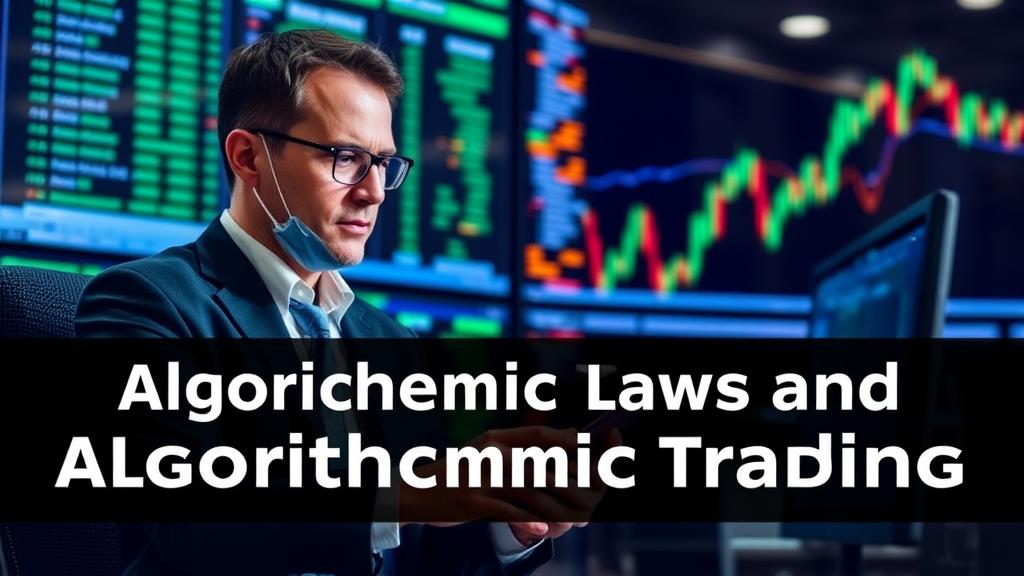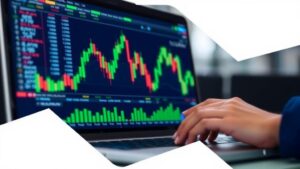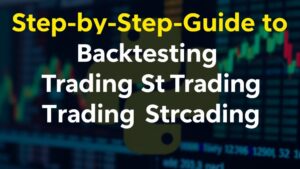Inviting Exploration of Advanced Strategies
Curious about how advanced algorithms are influencing investment strategies? Let’s dive into the mechanics of modern trading.
Insider trading refers to the buying or selling of securities based on non-public, material information about a company. While insider trading is not illegal per se, trading on such information is prohibited and can lead to severe penalties.
Key Components of Insider Trading Laws
- **Material Information**: This is any information that could influence an investor’s decision to buy or sell a stock. Examples include earnings reports, merger announcements, or strategic changes within the company.
2. **Non-Public Information**: Information that has not been disclosed to the general public. Once it is made available to all investors, it no longer qualifies as insider information.
3. **Insiders**: Individuals who have access to non-public information, such as executives, board members, and certain employees. Additionally, anyone who receives insider information from an insider can also be held liable.
- **Legal Framework**:
- Securities Exchange Act of 1934**: This act provides the foundation for insider trading regulations in the U.S.
- Regulation FD (Fair Disclosure)**: This regulation mandates that publicly traded companies must disclose material information to all investors simultaneously.
Consequences of Insider Trading Violations
- Violations of insider trading laws can result in severe repercussions, including:
- Civil Penalties**: Fines that can be up to three times the profit gained or loss avoided from the illegal trade.
- Criminal Charges**: Insiders may face imprisonment for up to 20 years.
- Reputational Damage**: Companies involved in insider trading scandals can suffer significant harm to their reputations, impacting stock prices and market trust.
The Rise of Algorithmic Trading
Algorithmic trading (or algo-trading) refers to the use of computer algorithms to execute trading orders at speeds and volumes far beyond human capabilities. This method has transformed the trading landscape since its inception.
Why Algorithmic Trading?
- Speed and Efficiency**: Algorithms can analyze vast amounts of data and execute trades in milliseconds, capitalizing on market inefficiencies.
- Reduced Transaction Costs**: By automating trades, firms can lower brokerage and transaction costs.
- Data-Driven Decisions**: Algorithms can process real-time data and make decisions based on predefined criteria, allowing for more informed trading strategies.
Types of Algorithmic Trading Strategies
- **Market Making**: Algorithms that provide liquidity by placing buy and sell orders simultaneously, profiting from the bid-ask spread.
- **Trend Following**: These algorithms analyze price movements to identify and follow trends, executing trades based on momentum.
- **Arbitrage**: This strategy exploits price discrepancies between different markets or assets, ensuring that traders can profit from inefficiencies.
- **Statistical Arbitrage**: This involves using statistical models to identify trading opportunities based on historical price relationships.
The Intersection of Insider Trading and Algorithmic Trading
As algorithmic trading continues to grow, it inevitably intersects with insider trading laws, raising critical issues for regulators and market participants.
Challenges for Regulators
- **Detecting Insider Trading**: Algorithms can execute trades swiftly, making it challenging for regulators to identify patterns indicative of insider trading. This rapid execution can obscure the trail of illegal trades.
- **Data Mining**: Algorithms may access and analyze huge datasets to identify patterns or correlations, including non-public information that could lead to insider trading.
3. **Market Impact**: The sheer volume of trades executed by algorithms can create price distortions, leading to questions about market fairness and integrity.
Real-World Examples
- Facebook IPO**: The rapid trades executed by algorithms during Facebook’s IPO, combined with leaks about potential issues with the company’s earnings, led to significant stock price volatility and raised questions about insider trading.
- SEC Hack**: In 2017, the Securities and Exchange Commission (SEC) announced that hackers had breached their EDGAR database and used stolen information to execute profitable trades, highlighting the vulnerabilities that can exist in a tech-driven trading environment.
Best Practices for Compliance in Algorithmic Trading
To navigate the complex intersection of insider trading laws and algorithmic trading, firms must adopt best practices to ensure compliance and maintain market integrity.
Compliance Strategies
- **Robust Surveillance Systems**: Firms should implement advanced monitoring systems to detect unusual trading patterns that may indicate insider trading.
2. **Regular Training**: Continuous education on insider trading laws and ethical trading practices is essential for employees involved in trading and compliance.
3. **Data Access Controls**: Limiting access to non-public information can help prevent potential insider trading violations within algorithmic trading environments.
4. **Whistleblower Programs**: Encouraging employees to report suspicious activities can enhance compliance and deter insider trading.
Conclusion
The relationship between insider trading laws and algorithmic trading is complex and multifaceted. While algorithmic trading offers significant advantages in terms of speed and efficiency, it also raises critical concerns about market integrity and compliance with insider trading regulations. As technology continues to evolve, regulators, firms, and investors must work collaboratively to ensure that the financial markets operate fairly and transparently. By understanding the laws governing insider trading and implementing robust compliance measures, stakeholders can navigate this intricate landscape while fostering a culture of ethical trading practices. Ultimately, striking the right balance between innovation and regulation is essential for the continued health of financial markets.



